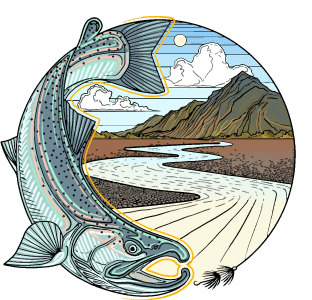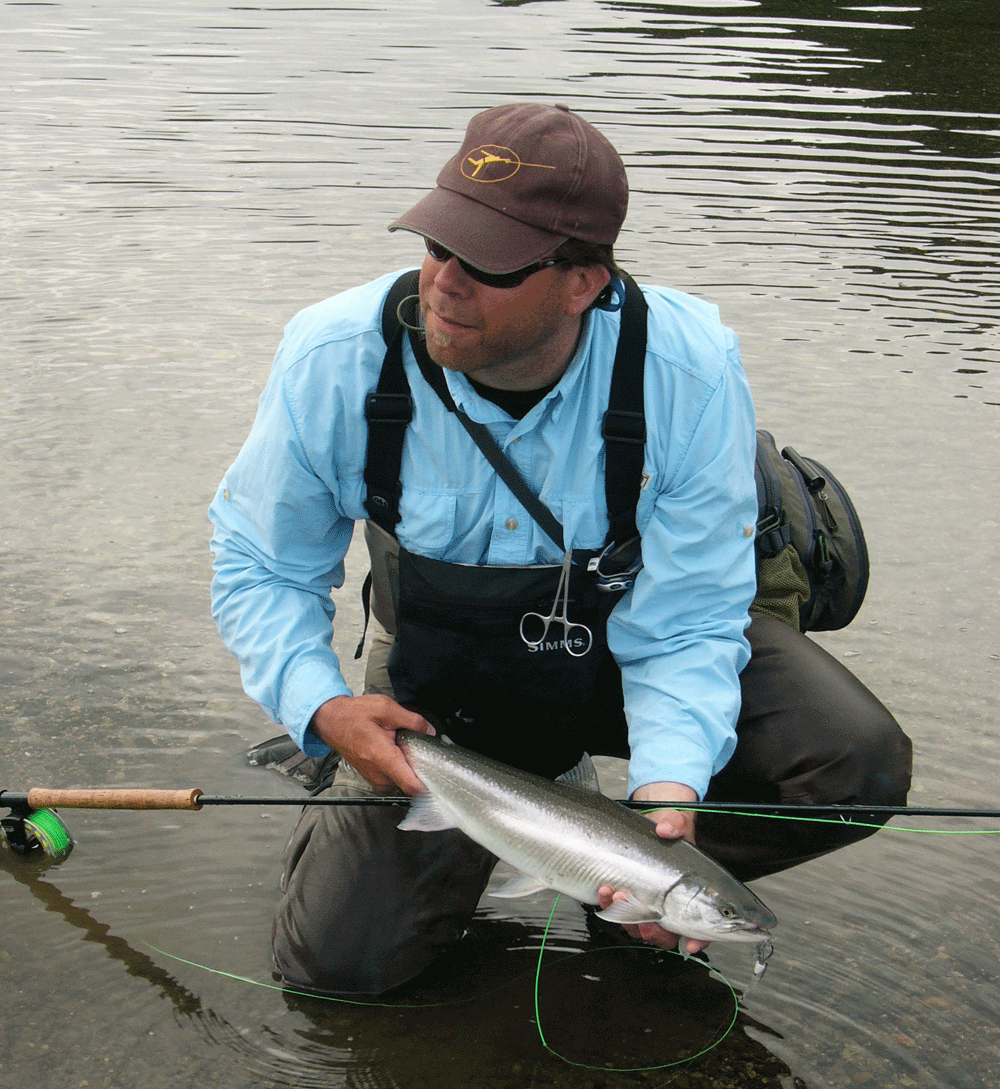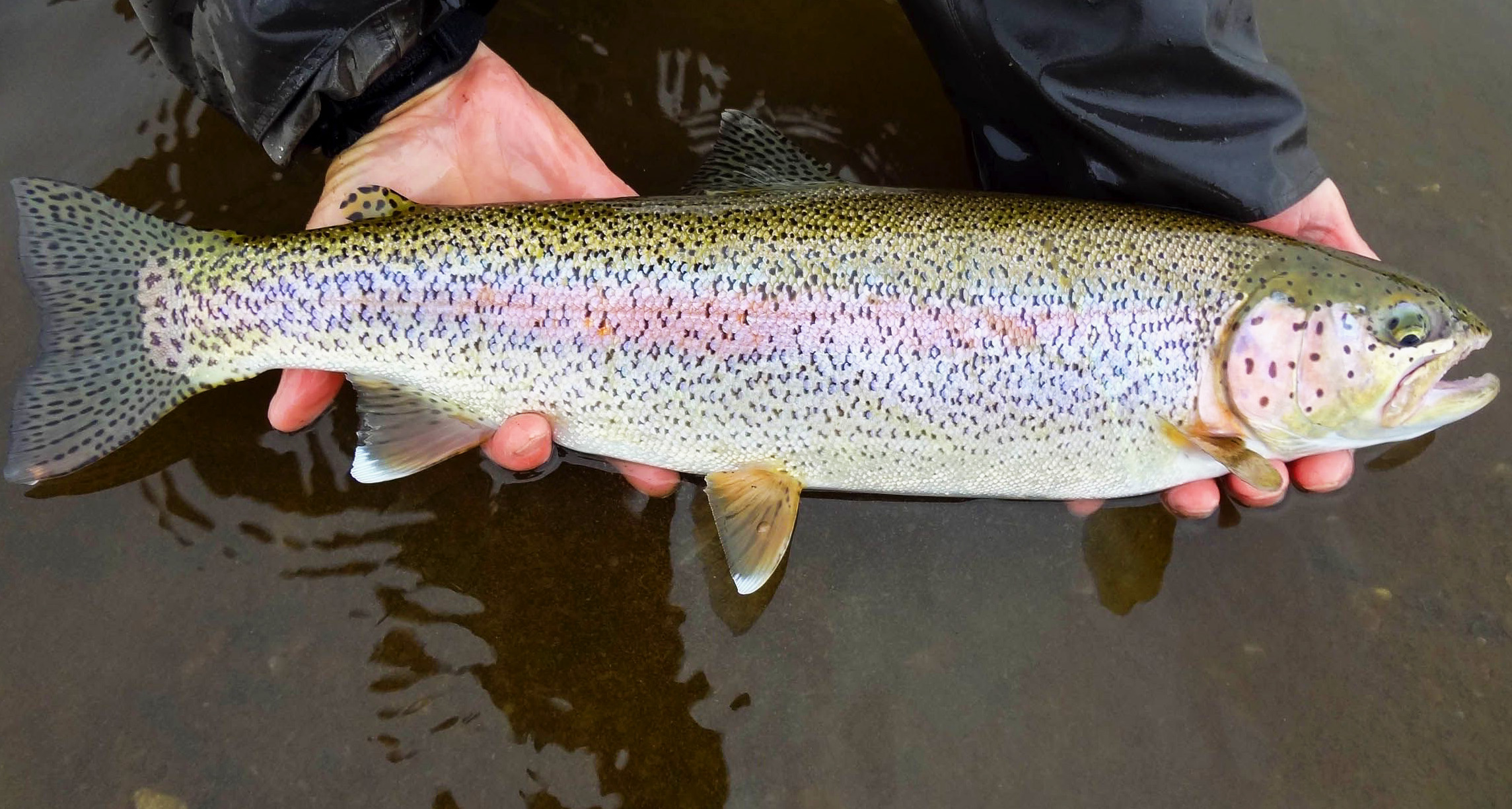
It’s a brisk spring morning, last night’s frost clings to the forest floor as the sun peeks through the canopy of the Tongass National Forest. Along the stream bank, icicle spears hang from the roots of a Sitka Spruce, long exposed from the high waters of a fall storm. Below the eroded bank lies a long slow run, pocked by riffles and old redds left over from the previous salmon spawn.
In the gravel beds below the stream surface, movement of life begins to emerge. Juvenile pink salmon fry are wiggling out of the stream bed and beginning their migration to the sea. Not long after, chum salmon fry will begin their out-migration as well. These fry will follow the stream’s path down into the brackish mixing of fresh and saltwater known as an estuary.This is where the salmon fry will spend the next few weeks growing into the next phase of their lives, known as the smolt phase.
Between mid-April and late May most estuaries and beaches throughout Southeast and Southcentral Alaska will see ravenous packs of Dolly Varden thrashing through the helpless schools of salmon smolt. These predators will push their prey into balls along the surface and tear through them like a bullet through a watermelon. Many of the smolt that don’t originally get swallowed, will be stunned and left quivering, making them easy targets for the next feeding Dolly. By mid-May, the millions of chum and pink smolt that have survived countless Dolly Varden attacks will navigate their way along the beaches of the coast and out into the north Pacific Ocean where they will spend the next 12-24 months of their lives.
WORKING THE TIDE
During the spring and early summer, salmon smolt are the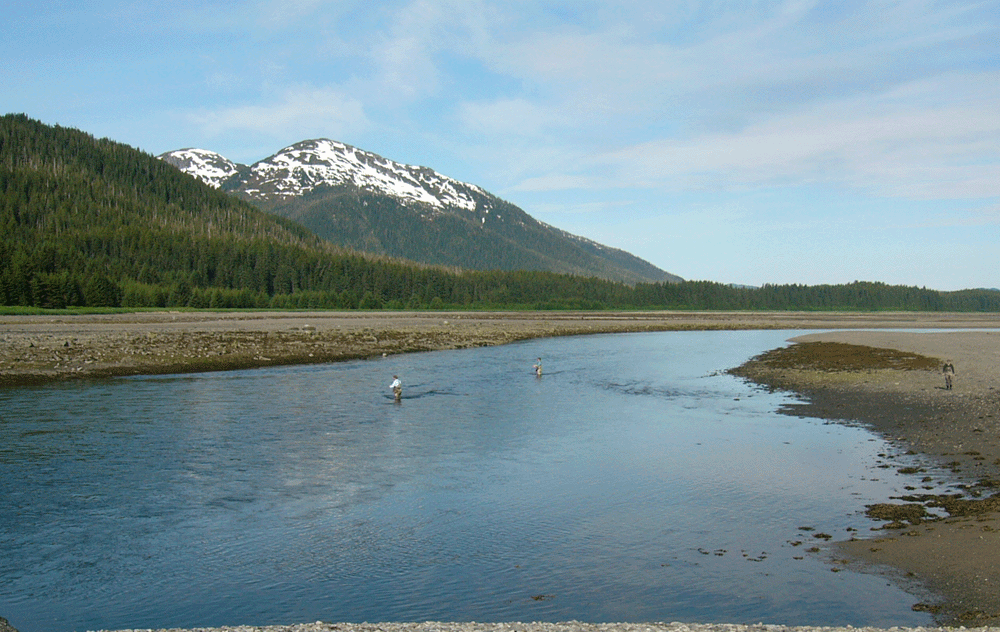
Dolly Varden are known to feed on both incoming and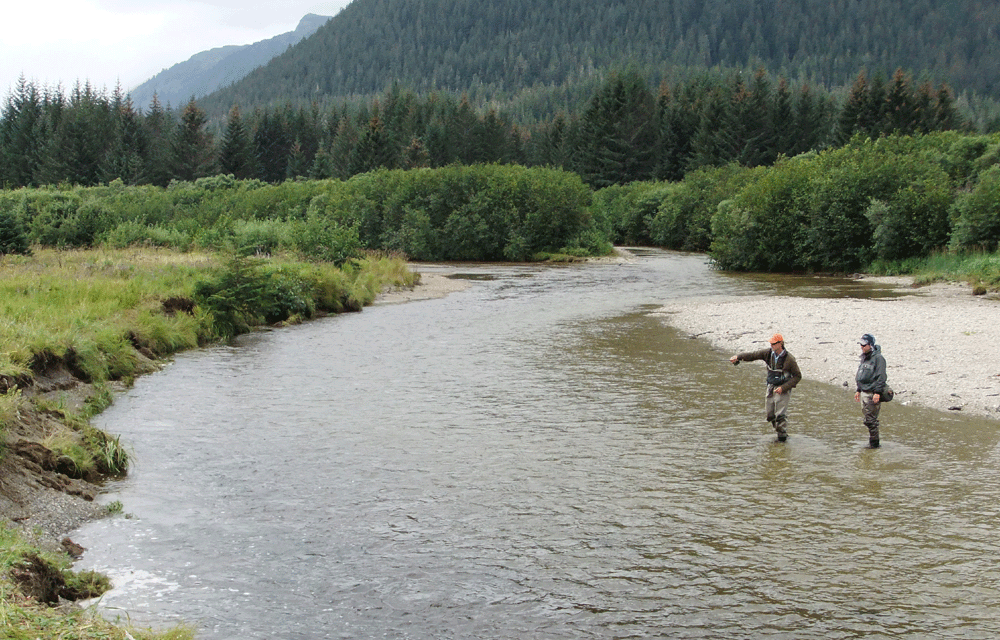
The first sign that anglers see when Dollies are going on the feed is the fry bust. This is when the fry/smolt burst out of the water fleeing for their lives, and from a distance it looks like rain drops hitting the water. Nine times out of ten, a large swirl will follow the fry as the Dollies rip through the school. As an angler, the best thing you can do is drop your fly right in the middle of a bust and start stripping the fly as fast as you can in 15-20 inch intervals. Many times this will result in a hook up within a few strips. If not, trying stripping even faster!

Positioning yourself to take advantage of Dollies feeding right off the beach often means standing in ankle deep water. If you are knee deep or deeper you are likely standing where you should be fishing. Casting parallel to 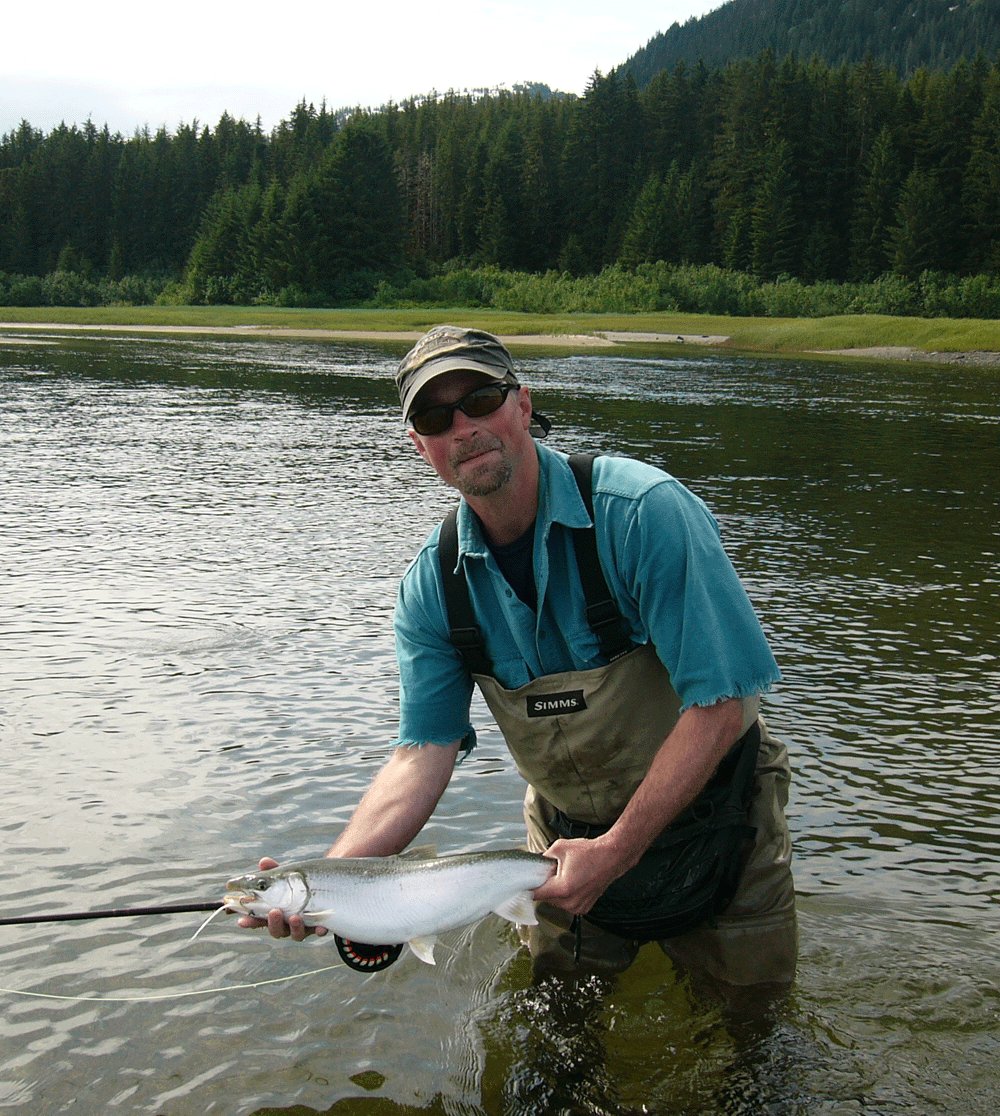
GEAR & TACKLE
The typical rod/reel/line set up for fishing Dollies in estuaries is a fast action 5 or 6 weight 9 foot rod. A weight forward floating line that is designed to turn over heavy flies and make quick casts is ideal. The Dollies are usually chasing the fry along the surface so a floating line will put the fly right in the strike zone. A tapered 9 foot 2X Trout Leader or 8 lb Salmon/Steelhead leader will do the job nicely.
Occasionally a sink tip line can be very handy. Several situations come to mind:
- If you are fishing the high end of the tide when not much water is moving
- Off of high cut banks in the upper reaches of the tide line
- Or in the river delta where the stream’s bed drops off into the salt
In all of these cases getting your fly down 5 or more feet can save the day. If a standard sink tip line is not in hand, a short 5 foot poly leader attached via loop to loop works really well.
Light weight switch rods have become incredibly popular for this fishery. A 4-5 wt. 10’ - 11’6” rod matched with either a one piece floating switch line or a single hand line that is “bumped” 1 to 2 line weights heavier than the rod is perfect. Because of the fast stripping technique used in fishing for Dollies, Skagit and Scandi shooting heads and running line systems are hard to use. They cast really well, but the loop to loop connection between the head and running line tends to catch up in the guides.
FLIES
 The best flies for sea run Dollies are small to medium sized baitfish patterns in #4 - #10. Patterns should be in natural colors such as olive, gray, light brown, and white. Minimalist flies that are sparse in materials work better for Dolly Varden than fuller dressed patterns that would be used for salmon or other saltwater species. Salmon smolt, like a lot of baitfish, have light bellies and darker back, so flies with two colors should be tied so that the darker material is on top of the lighter colored material. Some favorite patterns include: Clouser Minnows, Epoxy Mini Minnows, Lord of the Fry, Clones and similar small baitfish. When the fry bust is in full force, surface patterns that make a big commotion can elicit incredible topwater grabs. Having a few topwater flies such as Neil Creek Slider and the Floating Smelt are a good idea. Like their subsurface counterparts, strip them fast and erratically across the surface and be prepared for a lot of fun.
The best flies for sea run Dollies are small to medium sized baitfish patterns in #4 - #10. Patterns should be in natural colors such as olive, gray, light brown, and white. Minimalist flies that are sparse in materials work better for Dolly Varden than fuller dressed patterns that would be used for salmon or other saltwater species. Salmon smolt, like a lot of baitfish, have light bellies and darker back, so flies with two colors should be tied so that the darker material is on top of the lighter colored material. Some favorite patterns include: Clouser Minnows, Epoxy Mini Minnows, Lord of the Fry, Clones and similar small baitfish. When the fry bust is in full force, surface patterns that make a big commotion can elicit incredible topwater grabs. Having a few topwater flies such as Neil Creek Slider and the Floating Smelt are a good idea. Like their subsurface counterparts, strip them fast and erratically across the surface and be prepared for a lot of fun.
Spring beach fishing for Dollies is a challenge and the rewards are great when you put it all together. Grab your tide book, your gear and get out there this spring.

